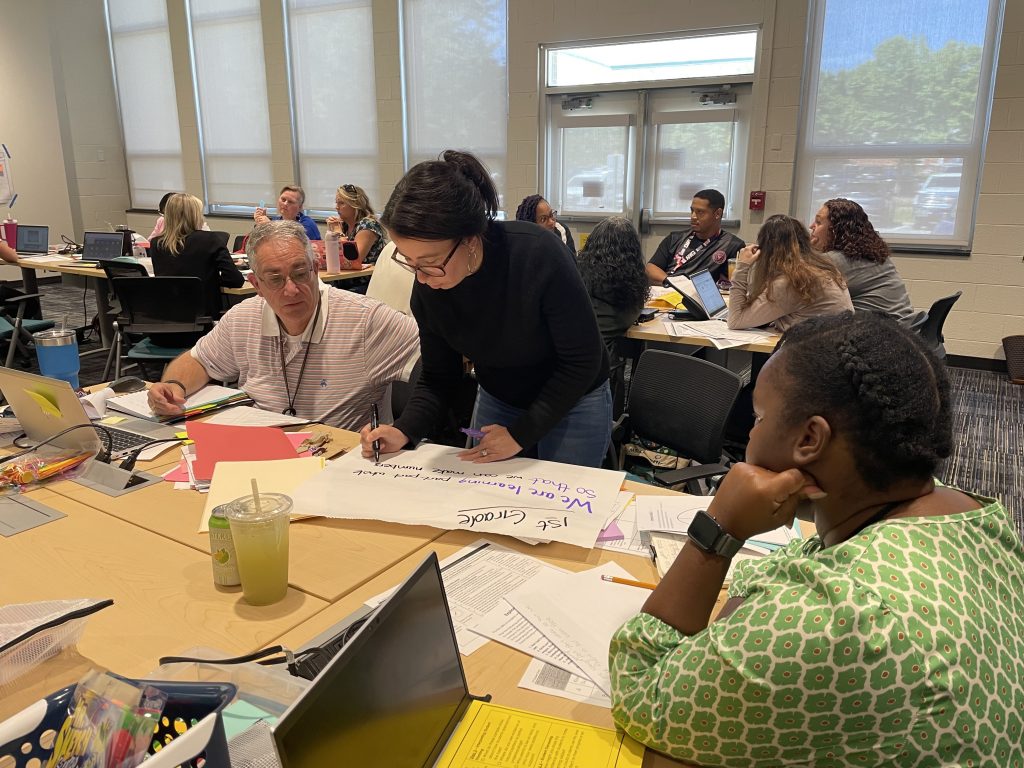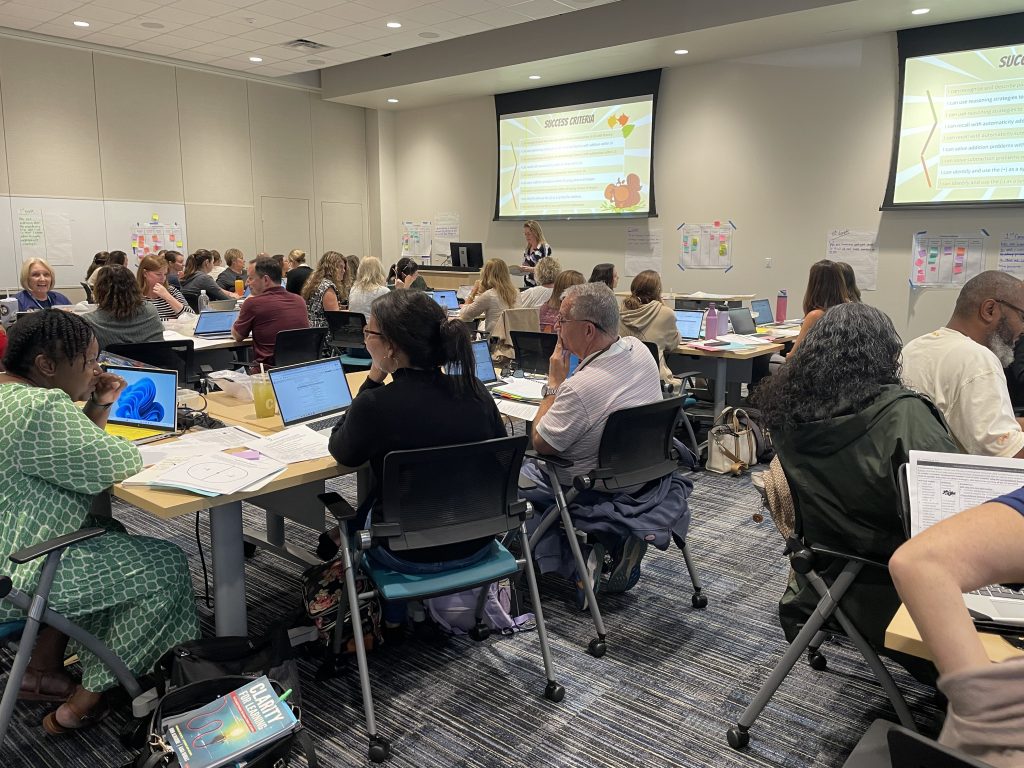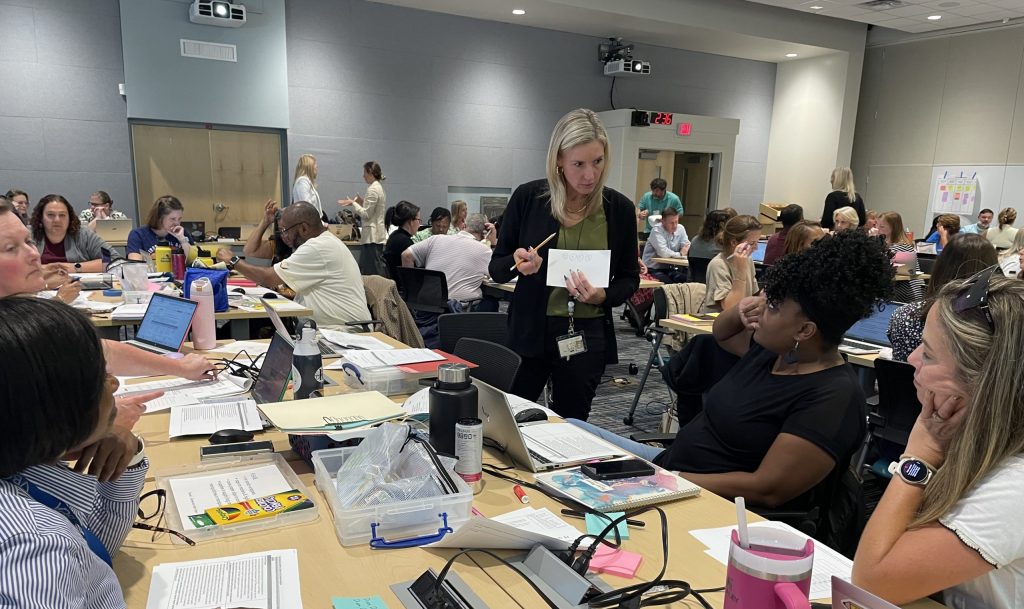
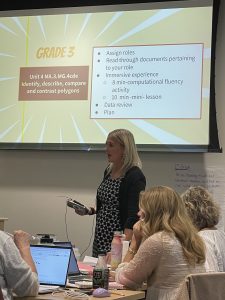
Almost every VBCPS elementary school has a math coach. About 50 of them get together regularly to exchange ideas and practice teaching methods. Their first meeting of the school year showed how learning math can be fun.
For example, Point O’ View Elementary math coach Jamie McLemore led a “Ratio Race” game for her team that focused on helping third graders with computations.
“We are working on our division!” she exclaimed to the “students,” who were actually other math coaches.
She asked them to place a paper clip under a pencil’s tip and spin it until it landed on a number within a circle on a piece of paper. Directions were to divide the number by five and record it on a game sheet.
“If I spin 45, I’m going to divide by five and write an answer,” McLemore told them.
“The first person to finish wins.”
Department of Teaching and Learning Elementary Mathematics Coordinator Johanna Ortiz said the coaches support teachers and students.
“Their job is to help teachers perfect their craft through professional learning communities (PLCs) and coaching,” Ortiz said.
Coaches lead PLCs, a collaboration with each grade level’s kindergarten through fifth grade teachers. They meet at least every other week during the school year, analyzing data, sharing practices and helping teachers implement improvement strategies.
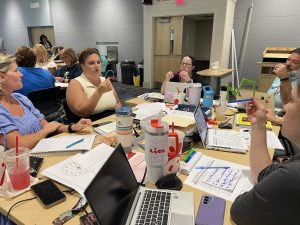
Coaches divide into teams and choose someone for several roles:
- a coach to facilitate the discussion.
- a teacher to lead the activity.
- and a participating teacher or teachers.
“Coaches teach a lesson to other coaches,” Ortiz explained.
During the most recent meeting, instructional math specialist Kristen Allen led the exercise, which involved preparing learning intentions for specific math units.
In other words, explaining the material in a kid-friendly way.
“What are we looking for kids to learn and how do we communicate that?” she asked the group.
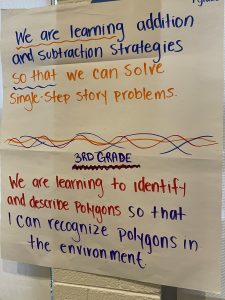
Groups of coaches were tasked with filling in the blanks to “We are learning __________so that__________.
Allen described it as “connecting the goal with the purpose.”
One group suggested, “We are learning to add and subtract so that we can solve problems in our everyday lives.”
There’s no wrong answer, Allen said. “Students should understand what they are learning and why.”
Coaches were also asked to write a learning intention for a third grade unit about how to identify, describe and compare polygons
One group suggested: “We are learning to identify and describe polygons so that we can recognize polygons in the environment.”
Examples of polygons students may see every day are a stop sign (octagon) and the black patches on a soccer ball (pentagon). Coaches then practiced the use of hands-on manipulatives called Exploragons to teach about polygons.
Ashia Brown, math coach at Arrowhead and Hermitage elementary schools, said the monthly math coaches meeting is beneficial. “We ask questions and share ideas,” she said.
The immersive experience helps them better support student achievement in math, she added.
“By practicing together, we can take back what we learned to our teachers.”
